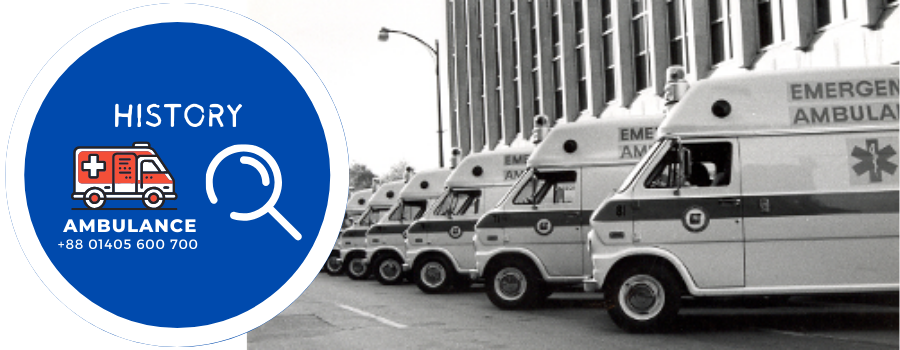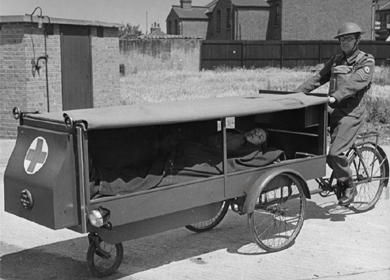Ambulance services, those swift lifesaving vehicles that race through city streets and rural lanes, have become an integral part of modern healthcare systems. These essential vehicles are often the first responders to emergencies, providing critical care and transportation to those in need. But where did this noble profession and its iconic vehicles originate? In this journey through history, we will trace the evolution of ambulance services from their humble beginnings to the modern, technologically advanced units we rely on today.
The Ancient Origins:
Our story begins in ancient civilizations, where rudimentary forms of ambulance services were first conceived. As early as 900 BCE, the ancient Greeks and Romans recognized the need for rapid transportation of wounded soldiers from the battlefield to medical facilities. Wagons and carts were the main mode of transportation for injured people in the past, and these vehicles were often driven by slaves or soldiers.
The Middle Ages and Religious Aid:
During the Middle Ages, various religious orders played a vital role in providing assistance to the sick and injured. Monasteries and convents operated rudimentary infirmaries and organized makeshift transportation for those in need. These compassionate efforts laid the foundation for more organized healthcare services in the future.
Early Innovations and Horse-Drawn Ambulances:
The 18th and 19th centuries witnessed significant advancements in medical knowledge and transportation technology. In the 18th century, Dominique Jean Larrey, a French surgeon, introduced the concept of mobile field hospitals and organized a medical corps during the Napoleonic Wars. Larrey's work inspired the development of horse-drawn ambulances, known as "flying ambulances," in the early 19th century.
Florence Nightingale and the Crimean War:
Florence Nightingale, a pioneer in modern nursing, made substantial contributions to ambulance services during the Crimean War in the mid-19th century. Her efforts to improve sanitation and medical care in military hospitals revolutionized patient care and inspired the development of more sophisticated ambulance systems.
The Civil War and the Birth of Modern Ambulance Services:
The American Civil War (1861–1865) marked a turning point in the history of ambulance services. Both the Union and Confederate armies recognized the need for organized medical transportation. Clara Barton, known as the "Angel of the Battlefield," played a crucial role in coordinating medical aid and ambulance services during the conflict.
The Ambulance Corps:
In the late 19th century, several countries began establishing formal ambulance corpses, often run by volunteers and charitable organizations. These early ambulance services utilized horse-drawn carriages and rapidly evolved to meet the growing demand for emergency medical care in urban areas.
Motorized Ambulances:
The early 20th century brought a significant innovation: the motorized ambulance. As automobiles became more prevalent, they replaced horse-drawn carriages and significantly improved response times. The introduction of the first motorized ambulance is attributed to the Michael Reese Hospital in Chicago in 1899.
World War I and the Red Cross:
World War I (1914–1918) saw the extensive use of ambulances on the battlefield. The International Committee of the Red Cross played a critical role in coordinating medical services and introducing standardized ambulance protocols, which influenced ambulance services worldwide.
The Emergence of Professional Ambulance Services:
In the aftermath of World War I, professional ambulance services began to emerge in major cities. The 1920s and 1930s saw the establishment of municipal ambulance services, often operated by fire departments or hospitals, aimed at serving the growing urban populations.
World War II and the Expansion of Ambulance Services:
World War II (1939–1945) further expanded the role of ambulances in warfare. Advances in medical technology, including mobile field hospitals and helicopter evacuation, transformed the way casualties were handled on the battlefield. These wartime innovations had a lasting impact on civilian ambulance services.
The Development of Paramedicine:
The mid-20th century witnessed the rise of paramedicine—a specialized field of emergency medical care. Paramedics, initially known as "ambulance attendants," received formal training to provide advanced medical care on the scene and during transport. This development marked a significant step forward in pre-hospital care.
The Evolution of Ambulance Design:
Ambulance design underwent numerous transformations, with advancements in patient comfort, safety, and equipment storage. Innovations included the introduction of modern stretchers, medical equipment compartments, and improved lighting and communication systems.
EMS Systems and 911:
The 1960s and 1970s saw the establishment of comprehensive Emergency Medical Services (EMS) systems in the United States. The implementation of the 911 emergency telephone number and the development of EMS protocols standardized emergency response procedures nationwide.
Air Ambulances and Helicopter EMS:
The latter half of the 20th century saw the widespread use of helicopters for medical transportation. Helicopter Emergency Medical Services (HEMS) dramatically reduced travel times to critical care facilities, especially in remote or inaccessible areas.
Technological Advancements:
The 21st century has seen remarkable technological advancements in ambulance services. Ambulances are equipped with advanced diagnostic equipment, telemedicine capabilities, and real-time tracking systems to optimize patient care and response times.
Challenges and Future Directions:
Despite the significant progress, ambulance services face challenges such as resource constraints, increasing call volumes, and the need for continuous training and adaptation. The future of ambulance services will likely involve further integration with telemedicine, autonomous vehicles, and artificial intelligence.
Conclusion:
The history of ambulance services is a testament to human compassion, innovation, and the pursuit of saving lives. From ancient wagons to modern, technologically advanced vehicles, ambulance services have evolved to meet the ever-growing demand for emergency medical care. As we look to the future, one thing remains constant: the unwavering dedication of the men and women who serve as paramedics, EMTs, and ambulance drivers, tirelessly responding to emergencies and providing critical care when it matters most.














